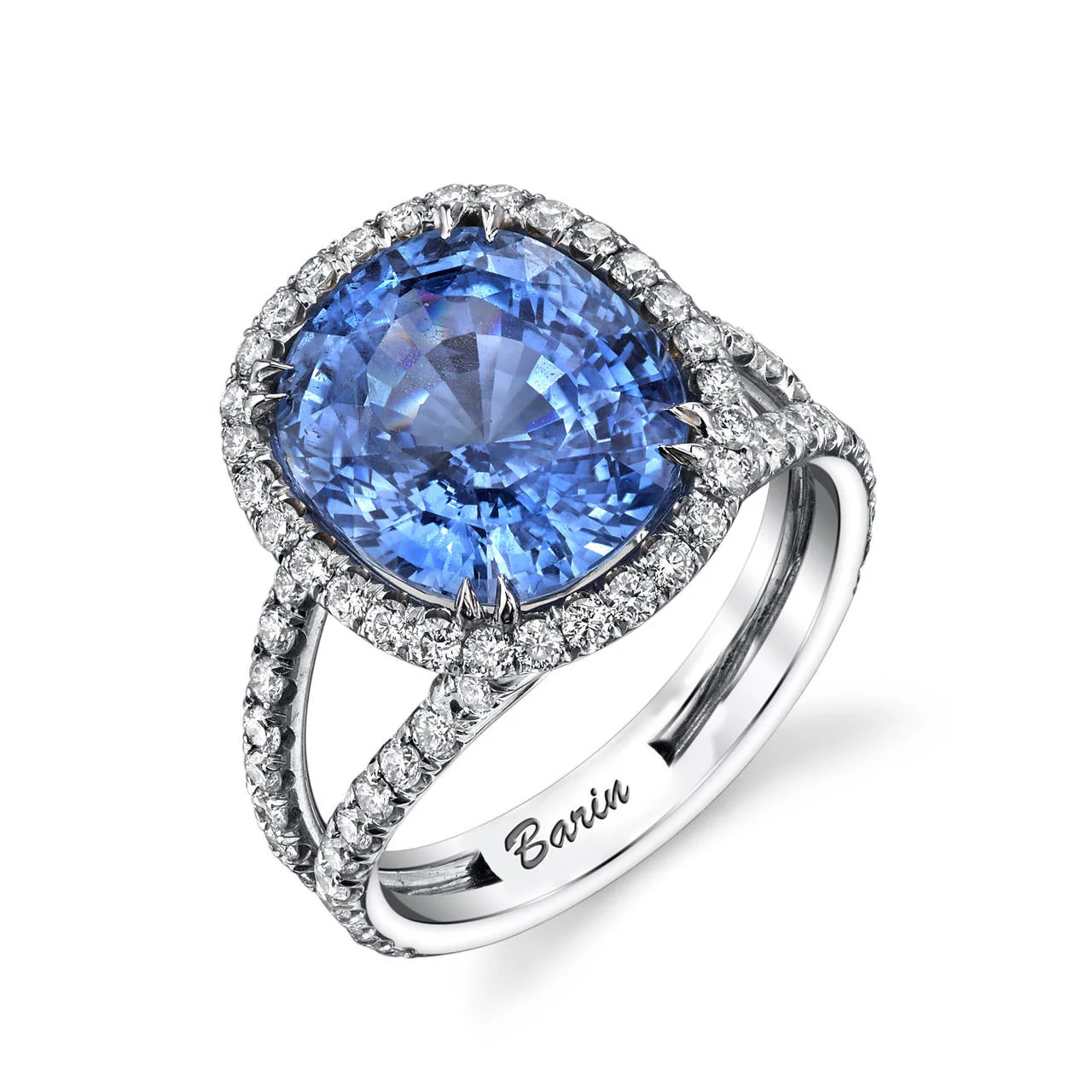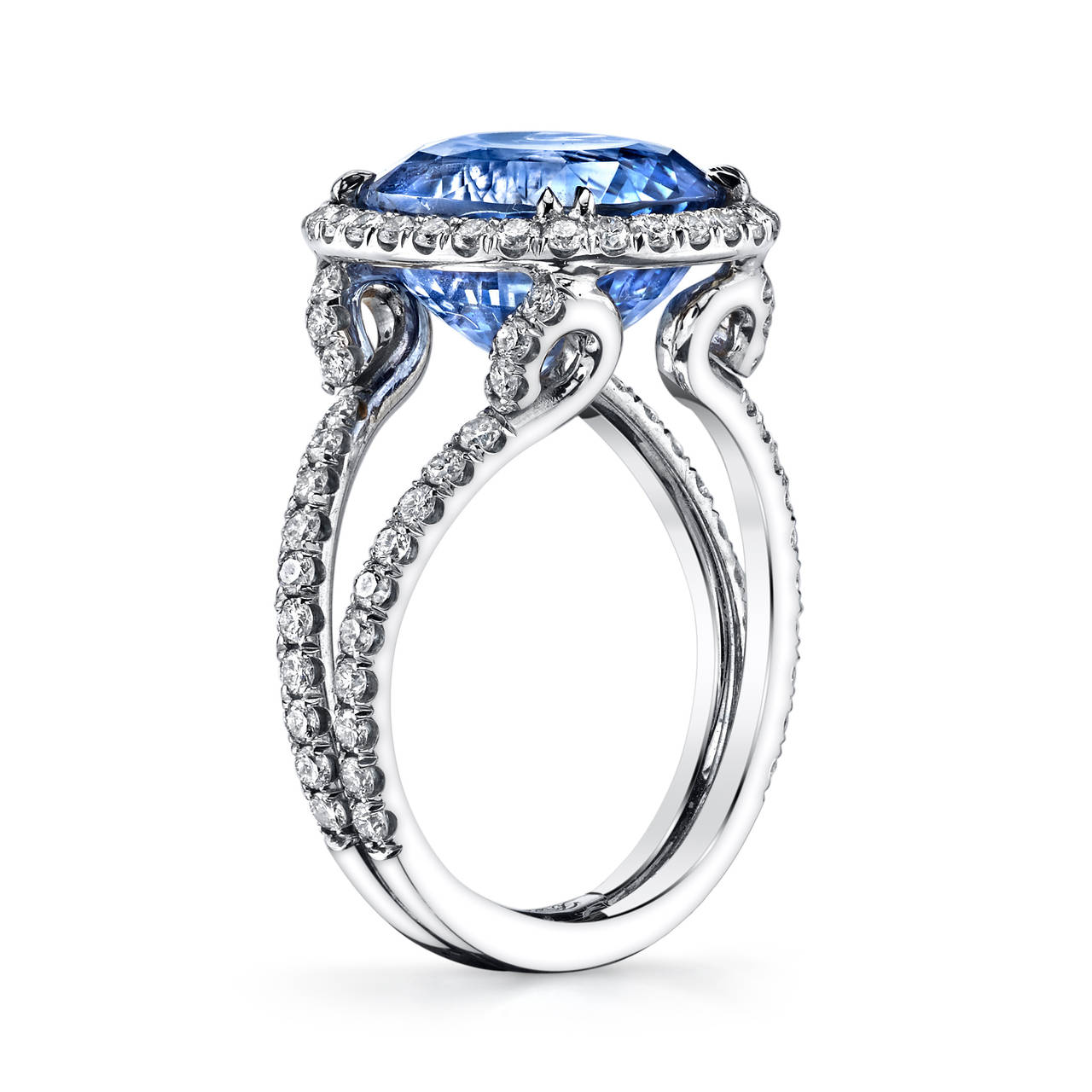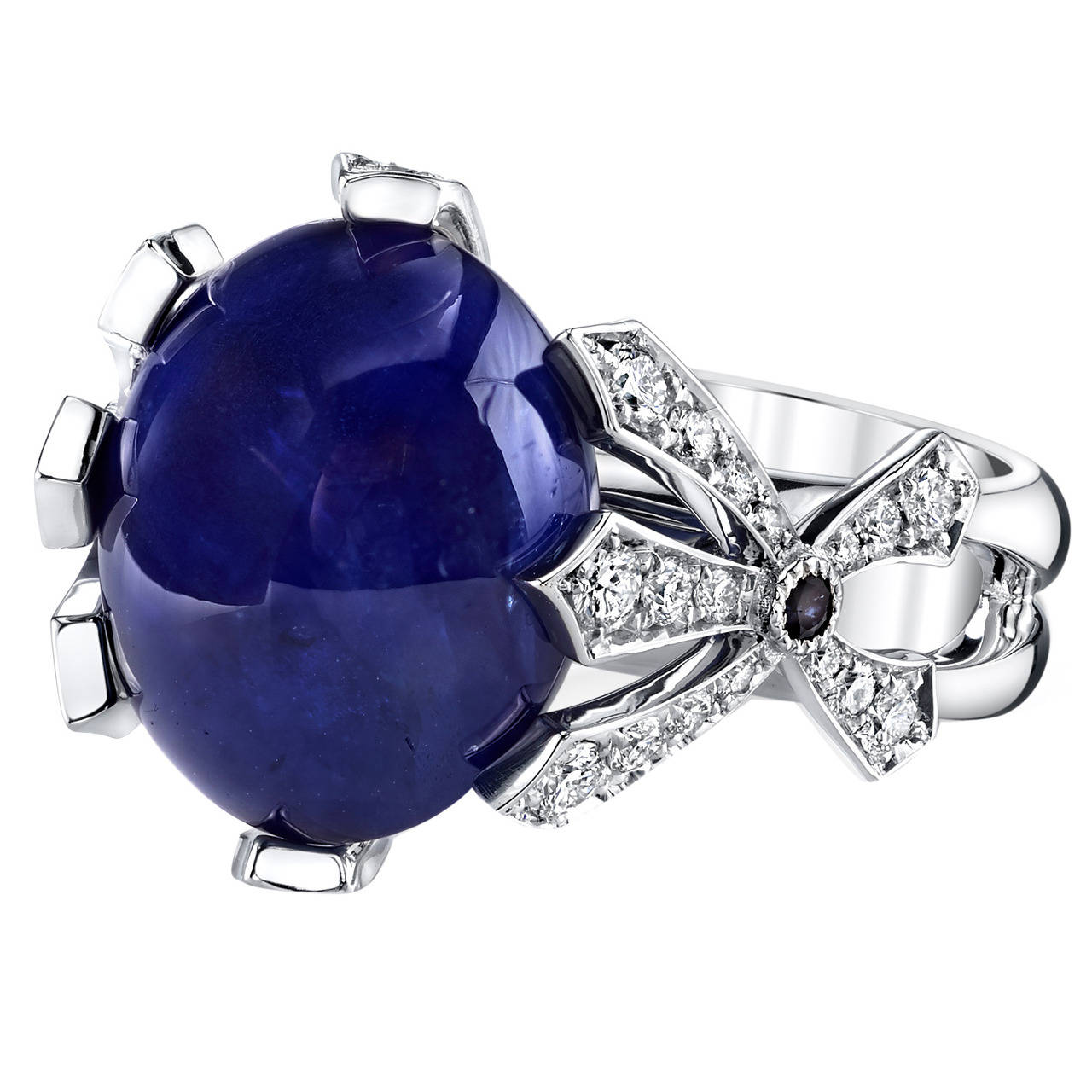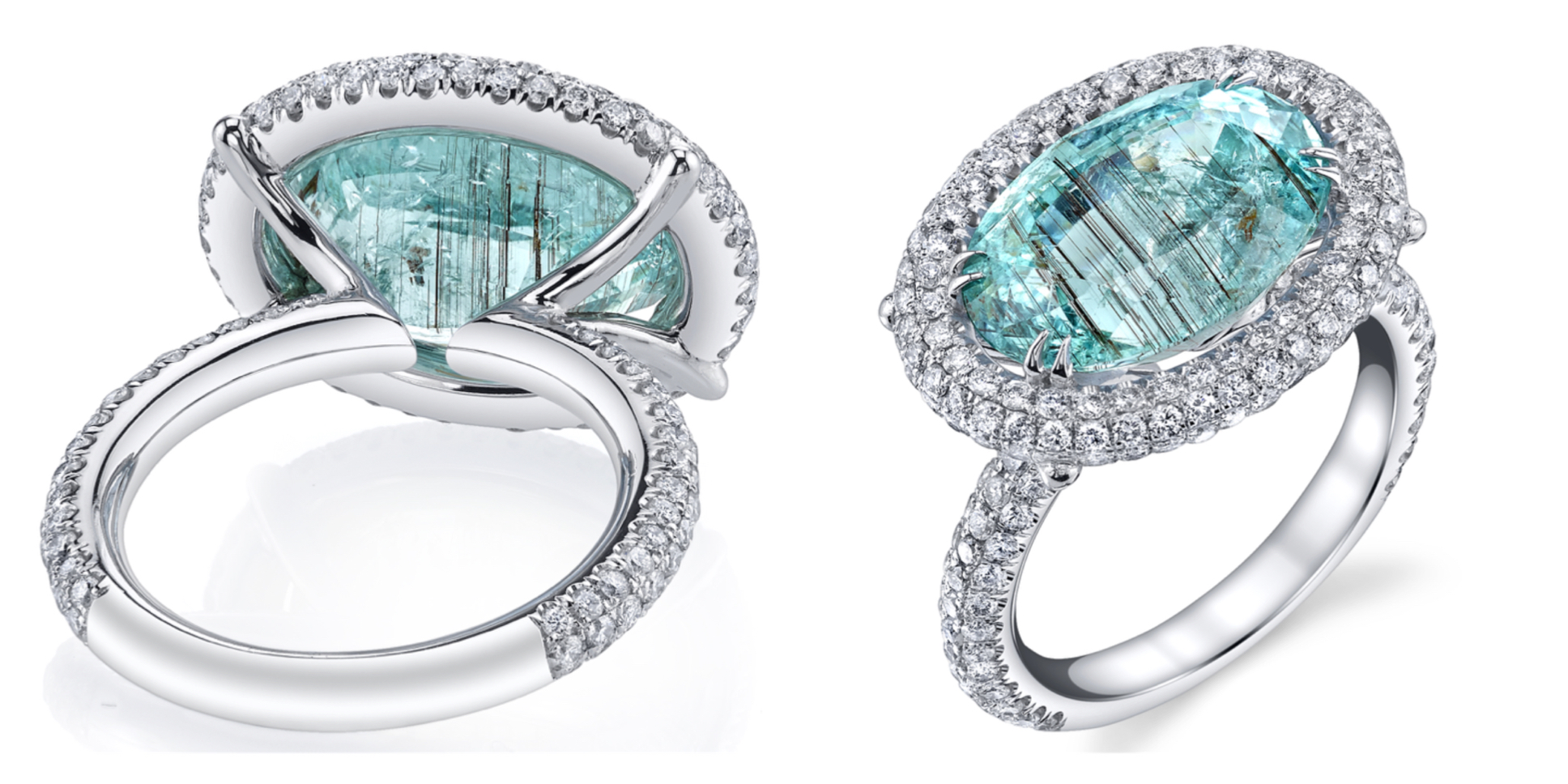Ruby Earrings
With a bit of an Oriental flare, these dangle earrings are a show stopper! The delicate pink Rubies perfectly complement the rich, succulent Garnet center stones. Along with about a half a carat of luscious White Diamonds, the Rubies and Garnets are set in vivid Yellow Gold. The combination of the gemstones creates a timeless color palette that, along with the fluid design, create a truly one of a kind masterpiece. 6.40 CT Garnet Center Stones accented with 0.31 CT Rubies and 0.45 CT White Diamonds, all set in 18 Karat Yellow Gold. Measurements: Length: 1.75in
Gold Earrings
Flirty and light, these dangle earrings have an unmistakable feminine flair! The earthy, rustic diamonds that adorn these earrings convey a classic and timeless feel perfect for the modern woman looking obtain a new piece of jewelry for their collection. The high-carat Yellow Gold details beautifully contribute to the natural tones of the Rustic Diamonds. All aspects of these earrings seamlessly work together to create a beautiful piece of art that is sure to spark conversations. 7.75 Ct Rustic Diamonds and 20 Karat Yellow Gold. These earrings are about 1.5 in long and 0.75 in wid
October Birthstone (Opal)
Opal is the stone attributed to those born in the month of October.
Often compared to volcanoes, galaxies, and fireworks, Opals have a rich history due to their striking color pattern. Highly prized and sought after by kings, emperors, maharajas and sultans, the majestic Opal has been desired throughout the ages. The Romans prized opals, ranking them second only to emeralds, and believed them to bring the owner good fortune. Arabic legend says the stone descended to Earth from a foreign galaxy in a flurry of lightning and storm.
The name Opal comes from "opalus," which means “to see a change in color”. Opals range in color from milky white to black with flashes of yellow, orange, green, red, and blue.
An opal's beauty is the product of contrast between its color play and its background. Opal is a formation of non- crystalline silica gel that seeped into crevices in the sedimentary strata. Through time and nature's heating and molding processes, the gel hardened into the form of opals.
The opal is composed of particles closely packed in spherical arrangements. When packed together in a regular pattern, a three-dimensional array of spaces are created that give opal its radiance.
There are three main aspects of an opal’s quality:
1. Color: Background color and play-of-color
2. Pattern: Arrangement of play-of-color
3. Clarity: Transparency and quantity of inclusions
Common terms for play-of-color patterns include:
· Pin-fire or pinpoint: Small, closely set patches of color
· Peacock: Mainly Blue and green
· Harlequin or mosaic: Broad, angular, closely set patches of color
· Flame: Sweeping reddish bands or streaks that shoot across the stone
With no two opals the same, this stone’s intrinsic beauty and ever-changing colors and patterns keep those who poses it spellbound. Individual opals can vary widely in appearance and quality. As diverse as snowflakes or fingerprints, each gem can differ noticeably.
September Birthstone (Sapphire)
For those who were born in the month of September the Sapphire is the traditional birthstone. Sapphires are one of the four precious gemstones (the other three are diamonds, rubies, and emeralds).
Sapphires come in almost any color imaginable, but you may be curious as to what makes this gemstone so versatile. Ready for another chemistry lesson?
A sapphire is a gemstone variety of the mineral corundum, among the strongest natural gemstones in existence. Pure corundum is colorless, but minute trace elements give the gemstone its signature variety of colors. Blue sapphires, for example, are colored by a combination of the trace elements iron and titanium. Iron and chromium create gold and orange sapphires, while chromium yields pinks and reds. The many combinations of trace elements result in extraordinary colored sapphires sometimes referred to as fancy color sapphires. Most natural sapphires are exposed to heat in order to improve their color and clarity. This practice is widely accepted and results in more vibrant, stronger stones that are more resistant to accidental chipping and breakage.
The word “sapphire” comes from the Latin word “sapphiru,” meaning "blue." Cornflower blue sapphires, also known as Kashmir sapphires, are the most valuable. These stones are often associated with loyalty and dignity, making them a top choice for royalty. In fact, members of the Vatican traditionally wore blue sapphires because the gems were believed to represent purity of purpose and deed.
The largest cut and polished sapphire, the Millennium sapphire, was discovered in Madagascar in 1996 and has a weight of 61,500 carats.
Sizing Spheres
Do you ever have problems with rings slipping, sliding, and rolling around your finger? When your beautiful gemstones end up on the wrong side of your finger, they are instantly more vulnerable and susceptible to chips and scratches.
To combat this issue, Michael Barin came up with another innovative solution – tiny spheres inserted on the inner side of the band that keep large, top-heavy rings secured in place. The spheres are made to match the metal of the ring, ranging from high-carat gold to platinum.
Pavé Settings
The word Pavé (pronounced pa-vay) comes from the French word “to pave,” as in paved with diamonds – upwards of 300 diamonds per ring in Michael Barin’s case. A superior design, coupled with an artfully chosen center stone, requires a superior setting. Most importantly, one that adds sparkle and shine, framing the center stone in an undeniable brilliance.
French Cut refers to the specific way that small Pavé diamonds are set into the metal of a ring. The finished look makes a ring appear as if it is made of solid diamonds, seamlessly wrapping around the band and the center stone, essentially creating a piece of art within itself.
Sapphires
Sapphires come in almost any color imaginable, but you may be curious as to what makes this gemstone so versatile. Ready for another chemistry lesson?
A sapphire is a gemstone variety of the mineral corundum, among the strongest natural gemstones in existence. Pure corundum is colorless, but minute trace elements give the gemstone its signature variety of colors. Blue sapphires, for example, are colored by a combination of the trace elements iron and titanium. Iron and chromium create gold and orange sapphires, while chromium yields pinks and reds. The many combinations of trace elements result in extraordinary colored sapphires sometimes referred to as fancy color sapphires. Most natural sapphires are exposed to heat in order to improve their color and clarity. This practice is widely accepted and results in more vibrant, stronger stones that are more resistant to accidental chipping and breakage.
The word “sapphire” comes from the Latin word “sapphiru,” meaning "blue." Cornflower blue sapphires, also known as Kashmir sapphires, are the most valuable. These stones are often associated with loyalty and dignity, making them a top choice for royalty. In fact, members of the Vatican traditionally wore blue sapphires because the gems were believed to represent purity of purpose and deed. The largest cut and polished sapphire, the Millennium sapphire, was discovered in Madagascar in 1996 and has a weight of 61,500 carats.
Paraíba Tourmaline
In just over a few decades, the Paraíba Tourmaline has become one of the rarest and most sought-after gems in the world. Originally discovered in 1989 in the state of Paraíba, Brazil, these vivid stones have a bright glow incomparable to most gems. This copper and manganese bearing Tourmaline comes in shades ranging from brilliant turquoise to stunning blue-green. Although members of this gemstone family technically come in all colors of the rainbow, the Paraíba’s rarity is undeniable – for every 10,000 diamonds mined, there is only one Paraíba Tourmaline.
A recent twist in history makes this remarkable gemstone even more intriguing. In 2003, a new wave of vivid turquoise, copper-bearing Tourmalines entered the market. These stones were mined by hand in the copper-rich mountains of Mozambique and Nigeria in Africa. With only minute chemical differences from the stones unearthed in Brazil, these new Paraíba-like Tourmalines are often found weighing five carats or more.
If we think about the geographical location of these two varieties of Tourmaline, it brings us to a very interesting observation – at some point, the copper-rich mountains of Brazil must have been a lot closer to the copper-rich mountains of Mozambique and Nigeria. Keeping in mind that the continent of South America and the coast of Africa appear to fit together like puzzle pieces, it is very possible that these two landmasses were connected a long time ago and have slowly crept away from each other as a result of continental drift.
Fact or fiction? We can’t be sure. This story only adds to the allure of the beautiful Paraíba Tourmaline, making its wearer part of a very intriguing mystery.
Michael Barin’s Paraíba collection boast a design with a 7.74 carat Paraíba-like Tourmaline set in 18 Karat White Gold and accented with Diamonds. This particular stone displays a rutilated copper pattern, lighting the stone from within.












